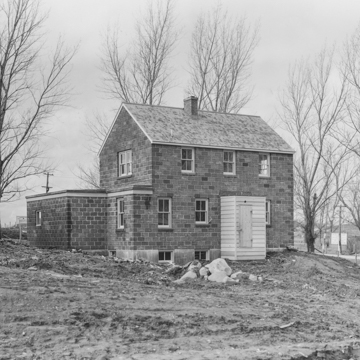Ironwood Homesteads is a small, New Deal, garden community project of the U.S. Resettlement Administration, built on a site “with good agricultural possibilities.” With its garden community projects, the administration intended to achieve efficiency and conservation in housing and land use, and in the process, to create jobs. At Ironwood Homesteads 132 units costing $10,403 each were initiated. There were one-, two-, and four-family concrete-block and brick dwellings, all with gable roofs and shed or gable dormers. Front entrances were enclosed against the harsh climate. A community building, a store, and the post office were also part of the project. The houses were touted as practical, modern, and low-cost garden units. According to local rumor, the project may have been built as part of a plan to relocate the city of Ironwood to the north because it was built over a valuable vein of ore.
You are here
Ironwood Homesteads
If SAH Archipedia has been useful to you, please consider supporting it.
SAH Archipedia tells the story of the United States through its buildings, landscapes, and cities. This freely available resource empowers the public with authoritative knowledge that deepens their understanding and appreciation of the built environment. But the Society of Architectural Historians, which created SAH Archipedia with University of Virginia Press, needs your support to maintain the high-caliber research, writing, photography, cartography, editing, design, and programming that make SAH Archipedia a trusted online resource available to all who value the history of place, heritage tourism, and learning.















